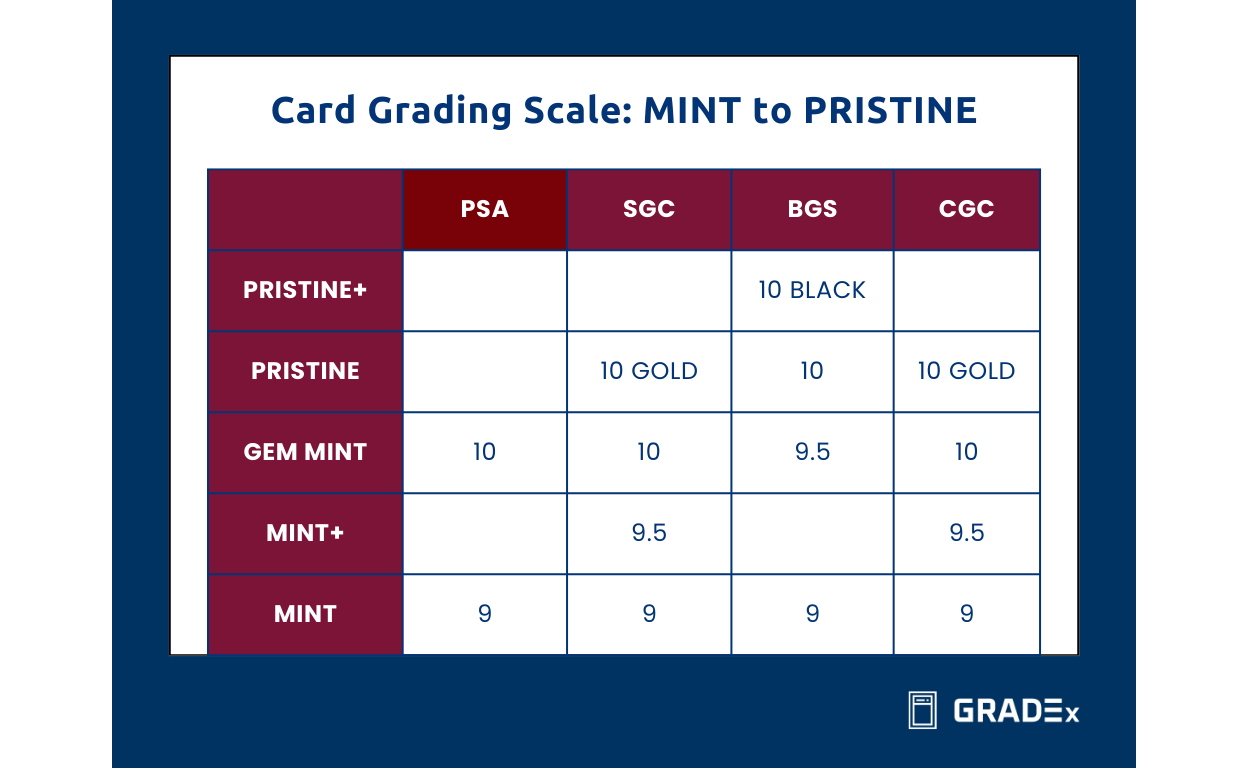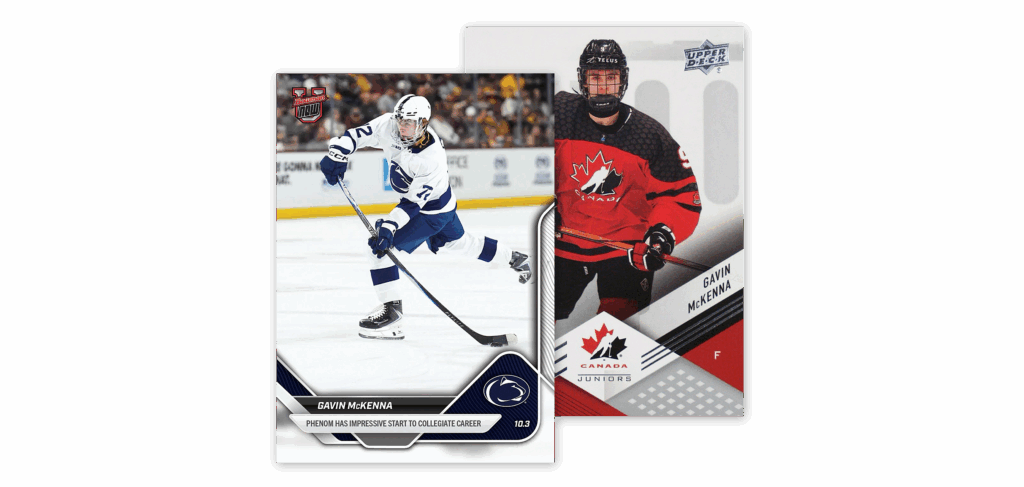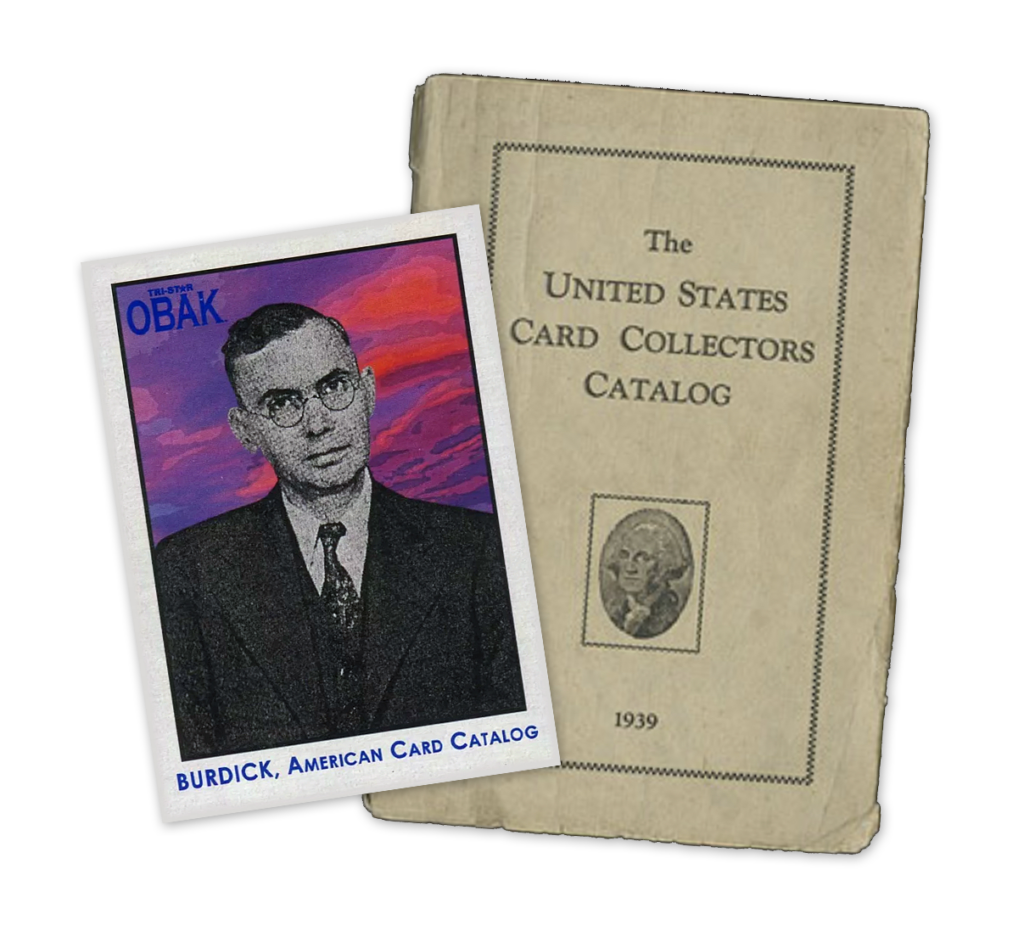Distinguishing Between Mint, Gem Mint, and Pristine Cards: Not All Mint Cards Are Created Equal
Collectors often have strong preferences, particularly regarding their favorite professional grading company. Changing these views can be difficult. However, let’s work toward a shared understanding of what Mint, Gem Mint, and Pristine cards actually mean.
First, we’ll examine the formal definitions of Mint, Mint+, Gem Mint, Pristine, and “Pristine+” grades from the Big Four grading companies: PSA, SGC, CGC, and BGS.
A card’s final grade depends on several factors, including corners, centering, edges, and surface. From the start, it’s important to understand the difference between “strong” and “soft” grades. Two cards with the same grade from the same company may not be identical. One card could be in better condition — or “mintier” — than another. Each has its own unique strengths and weaknesses.
Remember that vintage cards are evaluated differently than modern ones. A 1952 card, for example, is judged by different standards than a 2020 card. This is due to advances in printing technology, cutting precision, card stock quality, stamping, numbering, and collation. Understanding how a card originally looked and was produced is essential. When submitting a card for grading, you should know what a “pack-fresh” example looks like.
Let’s review one final term: “eye appeal.” A card with strong eye appeal features outstanding surface color and centering.
This analysis doesn’t consider current secondary-market values, market share, or the popularity of specific grading companies. We’re simply trying to establish what defines a card as Mint, Gem Mint, or Pristine.
Now, let’s break down how each grade is defined by the Big Four…
Pristine+ 10, Definitions
N/A
N/A
A Perfect 10 is a flawless card to the naked eye [and under magnification]. The centering is 50/50, and the card has flawless color and registration [CGC no longer grades cards as Perfect 10].
Summary:
A Pristine+ card is indeed flawless. It has perfect 50/50 centering on the front and 55/45 on the back, impeccably sharp corners under magnification, smooth edges, no print spots, vibrant color, perfect focus, and no scratches or print lines. In the case of BGS, a Black Label Pristine 10 card has all four subgrades of 10.
Pristine 10, Definitions
N/A
A virtually flawless card. 50/50 centering, crisp focus, four sharp corners, free of stains, no breaks in surface gloss, no print or refractor lines, and no visible wear under magnification.
A Pristine 10 is a virtually flawless card to the naked eye. The centering is 50/50, and the card has flawless color and registration. All cards that merit a CGC Pristine 10 grade will receive a special CGC Cards Pristine 10 label.
Centering: 50/50 all around on front. 55/45 or better on back. Corners: Perfect to the naked eye and virtually flawless under intense scrutiny. Edges: Perfect to the naked eye and virtually flawless under intense scrutiny. Surface: No print spots. Flawless color, devoid of registration or focus imperfections. Devoid of scratches and metallic print lines. The only difference between a black label 10 pristine and a gold label 10 pristine is the gold label 10 pristine allows for one small imperfection under magnification resulting in ONE 9.5 and THREE 10s in any combination of subgrade categories.
Summary:
A Pristine card is nearly flawless. It has perfect 50/50 centering on the front and 55/45 on the back, impeccably sharp corners under magnification, smooth edges, no print spots, vibrant color, perfect focus, and no scratches or print lines. In the case of BGS, a Gold Label Pristine 10 card has three subgrades of 10 and one of 9.5.
Gem Mint 10 and 9.5, Definitions
A PSA 10 card is a virtually perfect card. Attributes include four perfectly sharp corners, sharp focus and full original gloss. A PSA 10 card must be free of staining of any kind, but an allowance may be made for a slight printing imperfection if it doesn’t impair the overall appeal of the card. The image must be centered on the card within a tolerance not to exceed approximately 55/45 (*) percent on the front, and 75/25 percent on the reverse.
* NOTE: PSA recently updated the language of the Mint 9 grade centering percentage from “60/40” to “55/45 to 60/40”
55/45 or better centering, sharp focus, four sharp corners, free of stains, no breaks in surface gloss, no print or refractor lines, and no visible wear. A slight print spot visible under close scrutiny is allowable if it does not detract from the aesthetics of the card.
A Gem Mint 10 is a card that has received a 10 grade overall; however, one of the grading criteria does not meet the requirements of a Pristine 10. Corners will appear perfect to the naked eye and Mint+ under 10x magnification. The surface is free of print spots and should also display perfect gloss, devoid of any surface flaws. Centering is not to exceed approximately 55/45, and reverse centering is not to exceed 75/25.
Centering: 55/45 both ways on front. 60/40 or better on back. Corners: Virtually flawless to the naked eye with only slight imperfections allowed under magnification. Edges: Virtually flawless to the naked eye with only specs of wear visible under magnification. Surface: Virtually flawless to the naked eye with a few extremely minor print imperfections visible under magnification. Deep color, devoid of registration or focus imperfections. Devoid of scratches and metallic print lines.
Summary:
A Gem Mint card appears virtually perfect to the naked eye, with centering of 55/45 or better (or 60/40 or better for PSA) on the front and 75/25 or better on the back. It allows for one very minor defect, such as a tiny nick or white spot on a corner, the slightest printing imperfection, a light surface scratch or printing line, a minor focus imperfection, a minor print spot, or a minor edge flaw.
Mint+ 9.5, Definitions
N/A
Is a card that at first glance appears to be Gem Mint 10 upon close inspection it may have a tiny flaw(s) that keeps it from grading GEM MT 10.
A Mint+ 9.5 is a card that displays premium eye appeal for a Mint card. Qualities such as exceptional centering, surface qualities/color or other key elements can elevate a card to a Mint+ grade.
N/A
Summary:
A Mint+ card may initially appear as Gem Mint but allows for one or two very minor defects such as a tiny nick or white spot on a corner, a slight printing or focus imperfection, a light surface scratch or printing line, a tiny print spot, or a light edge flaw. The card must also have centering of 55/45 to 60/40 or better on the front. A Mint+ card often exhibits superior eye appeal, like 50/50 centering or exceptional color and focus. It can be considered a ‘very strong Mint 9’ card.
Mint 9, Definitions
A PSA 9 is a superb condition card that exhibits only one of the following minor flaws: a very slight wax stain on reverse, a minor printing imperfection or slightly off-white borders. Centering must be approximately 60/40 to 65/35 or better on the front and 90/10 or better on the reverse.
60/40 or better centering, sharp focus and four sharp corners. A minor flaw may exist upon close examination. A minor flaw may be but is not limited to: a slight nick to one corner, a small gloss break or surface scratch, a minor print line or minor refractor line, a minor focus or color imperfection, or a small print spot.
A Mint card has four sharp corners with only minor wear visible. Slight minor flaws on the edges may be visible. The surface must have all original gloss; however, a small number of specks or one minor spot or surface defect is allowed. For TCG cards, cards will have only a few minor manufacturing or handling defects. For sports and non-sports cards, centering must be 60/40 or better for the front of the card, and 90/10 for the back.
Centering: 55/45 both ways on front. 70/30 or better on back. Corners: Mint upon close inspection. Slight wear is allowed under normal scrutiny. Edges: Virtually Mint to the naked eye. Unobtrusive specks of chipping on the borders are allowed. Surface: A handful of printing specks or one minor spot. Very minor focus or color imperfections. Clean gloss with one or two tiny scratches barely noticeable to the naked eye. One faint, unobtrusive metallic print line is allowed.
Summary:
A Mint card may initially seem Gem Mint but could slightly lack in eye appeal. It permits one or two minor defects such as a small nick or white spot on a corner, a minor printing or focus imperfection, a minor surface scratch or printing line, a minor print spot, or a minor edge flaw. The card must also have centering of 60/40 or better (or 65/35 or better for PSA) on the front, and between 70/30 to 90/10 or better on the back.
Consistency in grading
The key aspect of professional grading is the graders’ consistency in assessing cards based on their company’s standards. It’s publicly acknowledged by most grading companies that when evaluating high-value cards, like a 1986 Fleer Michael Jordan, they seek multiple opinions to validate the final grade.
BGS almost updated their grading to a 10-point scale?
On March 31, 2023, BGS announced an ‘Updated Grading Scale’ on social media, introducing two major changes: 1) the Gem Mint grade was adjusted from 9.5 to 10, and 2) a new Mint+ 9.5 grade was introduced. This revised scale effectively downgraded any existing Gem Mint BGS 9.5 cards with four 9.5 sub-grades (9.5, 9.5, 9.5, 9.5) or three 9.5s and a 9 (9.5, 9.5, 9.5, 9) from Gem Mint to Mint+. This caused confusion and frustration among collectors, and after two days of negative feedback, the post was removed and the scale changes were revoked. Please refer to the provided graphic for more details.
Conclusion
What do you think of the two levels of Pristine? Which is your favorite card grading company? Visit the GRADEx Market Report for up-to-date data, pricing and stories on the most collected and iconic cards in the hobby.
Sources: PSAcard.com, goSGC.com, CGCcards.com, beckett.com/grading

GRADEx Staff
This story is a team effort. Our writers, editors, and hobby experts worked together, researching and reporting to bring you this piece.






